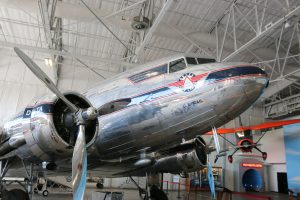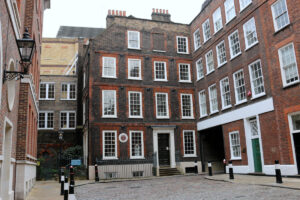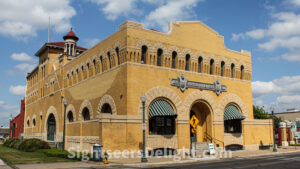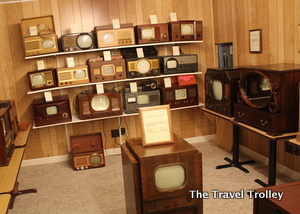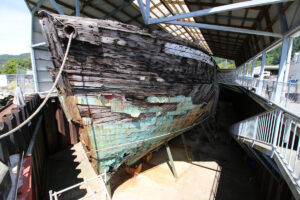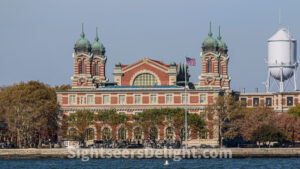The Delta Flight Museum was established in 1995 and opened publicly in June 2014. Located in a pair of 1940s-era maintenance hangars, the museum is home fleet of rare vintage aircraft and artifacts from more than 40 airlines related to Delta. Among the artifacts is the Spirit of Delta, Delta’s first Boeing 767. Employees, retirees, and friends purchased and donated the plane to Delta in 1982.
30354
Located off of Interstate 75 in Ocala, Florida, the Don Garlits Museum of Drag Racing features an amazing array of cars and vintage engines Garlits has rebuilt for display. Garlits’ impact on the sport is immeasurable. He was the first driver to officially surpass a number of speed marks, including hitting 270 mph on a quarter-mile track and 200 mph on a 1/8-mile track. Artifacts that help tell the story of drag racing’s history are featured throughout. Highlights include the Swamp Rat I, the car Garlits raced when he set his first world record; the Swamp Rat 14, the first rear engine car Garlits built; and the Swamp Rat 34.
34473
Dr. Samuel Johnson wrote the dictionary. Literally. Between 1748 and 1759, Johnson paid a £30 rent, and while living in the house compiled his seminal work, A Dictionary of the English Language, published in 1755 and heralded as “one of the greatest single achievements of scholarship.” Wool merchant Richard Gough built the house during the latter half of the 17th century, and after Johnson moved out, the building was used for a number of purposes. The edifice was damaged during World War II, damage that can still be seen today.
The Dr Pepper Museum in downtown Waco is dedicated to telling not just the story of Dr Pepper, but the story of the entire soft drink industry. Charles Alderton who developed a unique combination of flavors in 1885 in Dr. Wade Morrison’s Old Corner Drug Store. The soft drink — which, according to legend, Morrison named after the father of a girl he once loved — quickly became known as a “Waco.” The museum is located in the former Artesian Manufacturing and Bottling Company building. Completed in 1906, the structure was the first building built specifically to bottle Dr Pepper and remained in use until the 1960s when operations moved to a facility with more room for canning. The building remained vacant for roughly two decades until 1985 — the centennial of Dr Pepper — when work started to convert the building into a museum. The museum officially opened to the public on May 11, 1991.
76701
The 4,200-square-foot museum, located in Hilliard, Ohio, a western suburb of Columbus, boasts more than 150 television sets, including mechanical sets from the 1920s and American and British equipment from the 1930s, 1940s and 1950s. Many of the sets are in working order. The museum’s most popular exhibits include the collection of early color sets, a DuMont Royal Sovereign, the working Baird mechanical set and the RCA remote telecasting van. The Early Television Foundation, a non-profit organization that operates the museum, is always looking to expand its collection of equipment.
The Edwin Fox Maritime Museum houses what is said to be the “oldest merchant sailing ship still afloat.” The vessel, built in 1853 in India, transported immigrants to New Zealand and Australia and is the only remaining ship that brought convicts to Australia. After its sailing days, the boat was used in the 1880s as a floating freezer and later as a coal store hulk. In about 1950, the Edwin Fox was left to rot on its moorings, but preserved as a museum piece.
The Elberton Granite Museum in Elberton, Ga., opened in 1981. The free museum is dedicated to telling the story of how granite is produced and its impact on Elberton, Ga., is on display. The many exhibits at the museum include artifacts, photographs and whimsical anecdotes. While the tools of the trade show how granite is carved from the earth, a seven-foot-tall granite statue tucked away in a backroom of the museum illustrates a lighter side of the granite industry and how people view the monuments produced.
For millions of immigrants, Ellis Island was the first view of America. Today, it is a moving experience for anyone wanting to learn more about that era in U.S. history. The island, part of Statue of Liberty National Monument, sits in the shadow of the Statue of Liberty. Though quiet today, it’s amazing to think of what the Great Hall was like as new arrivals to the country passed through in search of a better life here.
EPIC The Irish Emigration Museum is an interactive museum in Dublin’s Docklands that explores Irish history and identity through 20 digital and hands-on galleries. The museum traces how Irish emigrants shaped communities around the world, highlighting figures who became scientists, politicians, poets, artists, and outlaws. Designed to move beyond clichés, EPIC shows how Irish culture extends far beyond Ireland’s shores and why the phrase “I’m Irish” resonates globally.
The Fernandina Beach Marine Welcome Center & Shrimping Museum gives visitors to Amelia Island a quick overview of the shrimping industry and its impact on the region. The Amelia Island Museum of History began running the museum after the city of Fernandina Beach approached the museum in 2010. The small museum, located on the waterfront in downtown Fernandina Beach, includes information about the shrimping industry and the families who played a vital role in its development. Theor efforts helped make the state “the birthplace of the modern shrimping industry.”
32034

